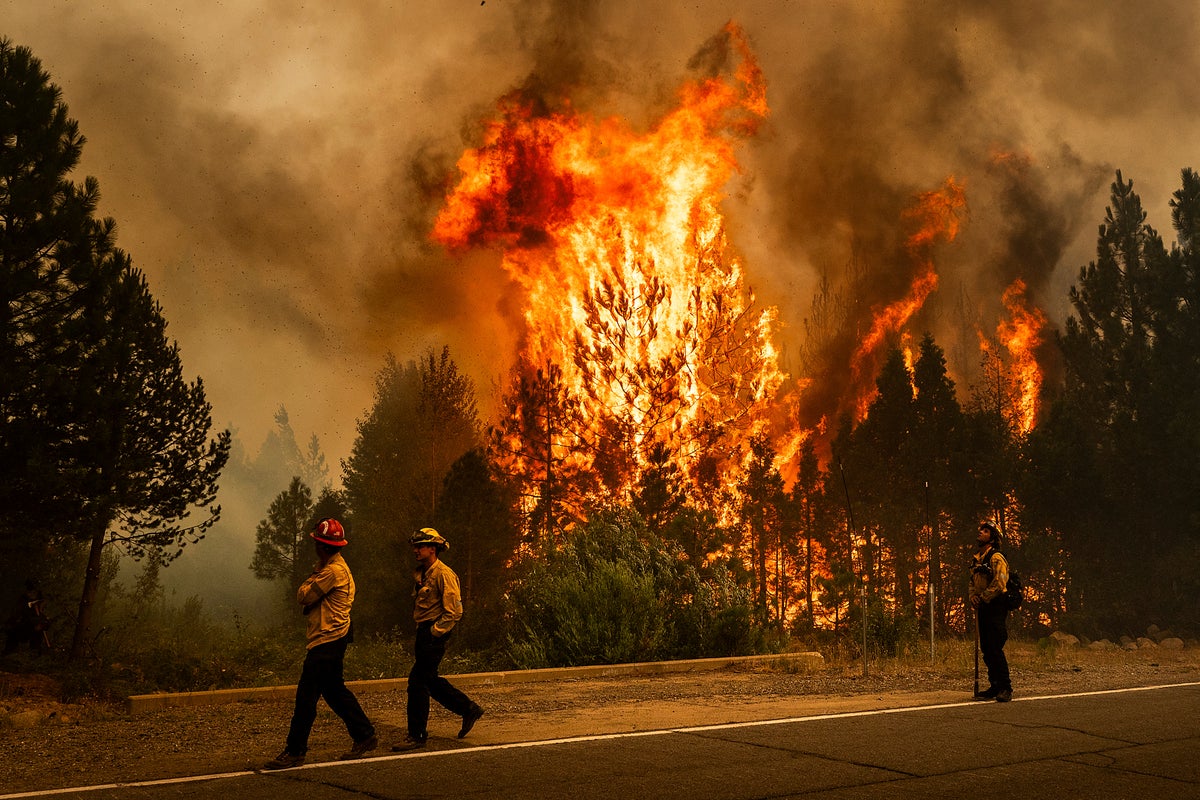
Support truly
independent journalism
California's largest wildfire this year has been significantly tamed as the state's initially fierce fire season has, at least temporarily, fallen into a relative calm.
The Park Fire was 53% contained Monday after scorching nearly 671 square miles (1,738 square kilometers) in several northern counties, destroying 637 structures and damaging 49 as it became the state's fourth-largest wildfire on record.
A large portion of the fire area has been in mop-up stages, which involves extinguishing smoldering material along containment lines, and residents of evacuated areas are returning home. Timber in its northeast corner continues to burn.
The fire is burning islands of vegetation within containment lines, the Cal Fire situation summary said.
The Park Fire was allegedly started by arson on July 24 in a wilderness park outside the Central Valley city of Chico. It spread northward with astonishing speed in withering conditions as it climbed the western slope of the Sierra Nevada.
July was marked by extraordinary heat in most of California, where back-to-back wet winters left the state flush with grasses and vegetation that dried and became ready to burn. Wildfires erupted up and down the state.
The first half of August has been warmer than average but not record-breaking, according to Daniel Swain, a climate scientist at the University of California, Los Angeles.
“We’re still seeing pretty regular ignitions and we’re still seeing significant fire activity, but the pace has slowed and the degree of that activity, the intensity, rates of initial spread, are not as high as they were,” he said in an online briefing Friday.
“Nonetheless, vegetation remains drier than average in most places in California and will likely remain so nearly everywhere in California for the foreseeable future,” he said.
There are signs of a return of high heat in parts of the West by late August and early September, Swain said.
“I would expect to see another resurgence in wildfire activity then across a broad swath of the West, including California,” he said.







